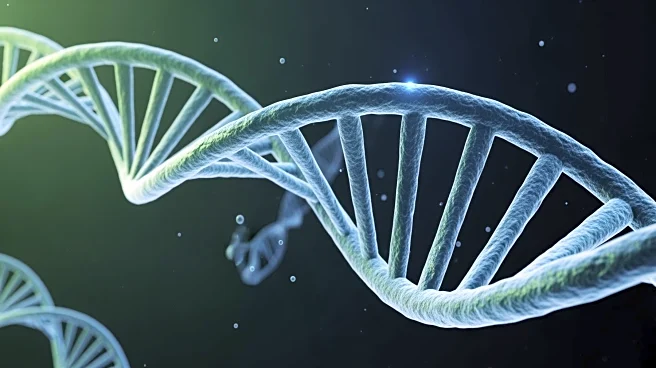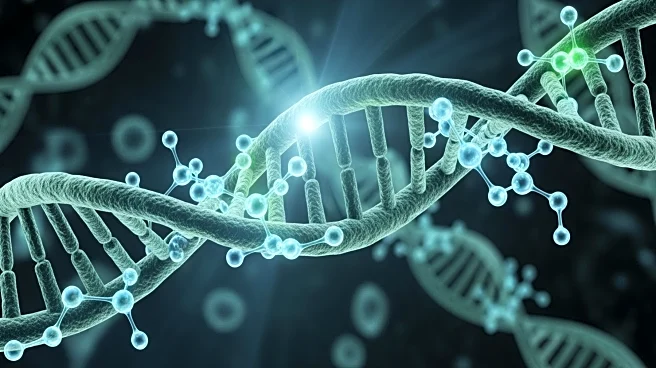What's Happening?
Researchers at Utrecht University have developed a new fluorescent sensor that provides real-time insights into how cells repair DNA damage. This innovative tool, detailed in a study published in Nature
Communications, allows scientists to observe the repair process as it occurs, offering a dynamic view of cellular responses to DNA damage. Traditionally, methods to study DNA repair involved using antibodies that bind to damaged DNA, which required fixing and killing cells at various stages, thus providing only static snapshots. The new sensor, however, is built from the tandem BRCT domain of the protein MCPH1 and binds briefly to the histone mark γH2AX at sites of DNA double-strand breaks. By attaching a fluorescent tag, the sensor illuminates DNA damage without disrupting the cell's repair mechanisms. This advancement enables researchers to track the kinetics of repair in live cells, providing a more comprehensive understanding of cellular behavior during DNA repair.
Why It's Important?
The development of this sensor is significant for several fields, including cancer biology, drug safety testing, and aging research. DNA repair is crucial for maintaining cellular health, and failures in this process can lead to diseases such as cancer and neurodegeneration. By allowing scientists to observe DNA repair in real-time, the sensor could accelerate research into treatments that rely on inducing DNA damage in tumor cells. Additionally, understanding DNA repair mechanisms is vital for aging studies, as a lowered capacity for DNA repair is linked to many age-related diseases. The sensor's ability to provide a dynamic view of repair processes could lead to breakthroughs in understanding how cells maintain genomic integrity, potentially informing new therapeutic strategies.
What's Next?
The Utrecht team plans to make the sensor openly available to researchers, which could facilitate discoveries across various scientific fields. The sensor's versatility has already been demonstrated beyond cultured cells, as it successfully revealed programmed DNA breaks in the nematode C. elegans during gametogenesis. This suggests its applicability in living organisms, not just cell lines. As researchers begin to utilize this tool, it may lead to new insights into DNA repair processes and their implications for disease treatment and prevention. The ability to observe DNA repair in real-time could also enhance drug testing protocols, providing more accurate assessments of drug safety and efficacy.













